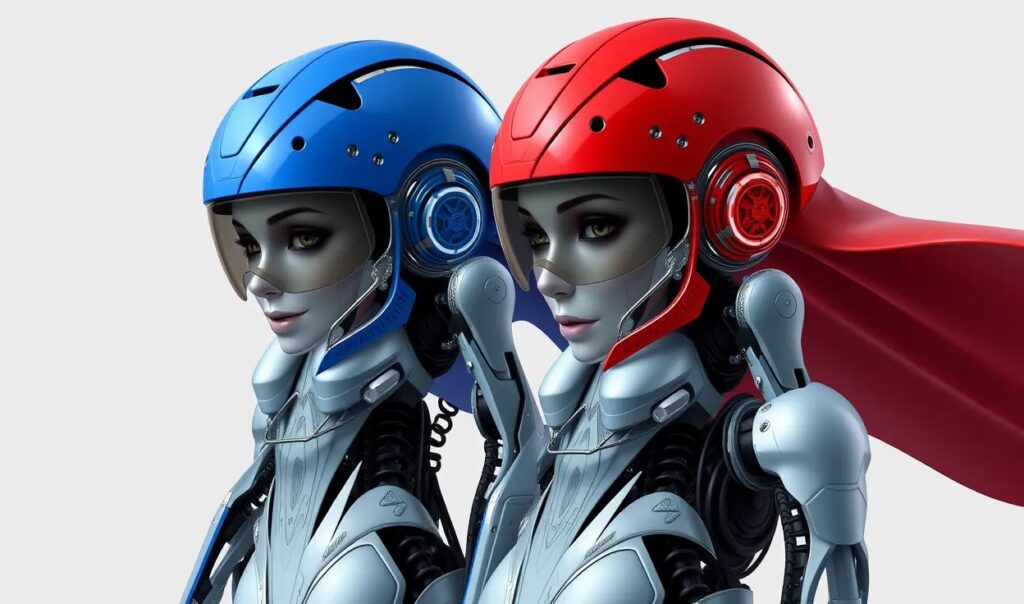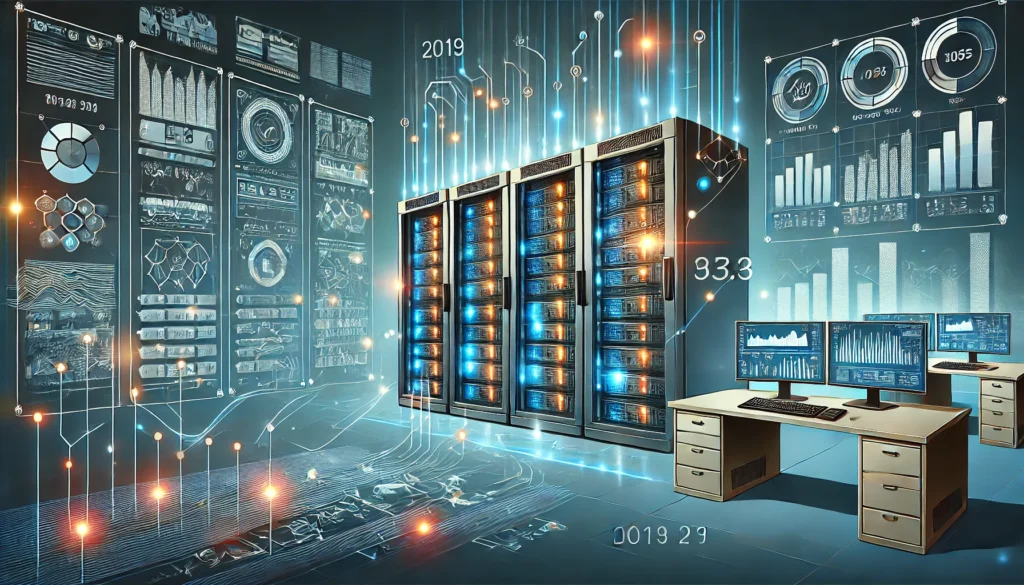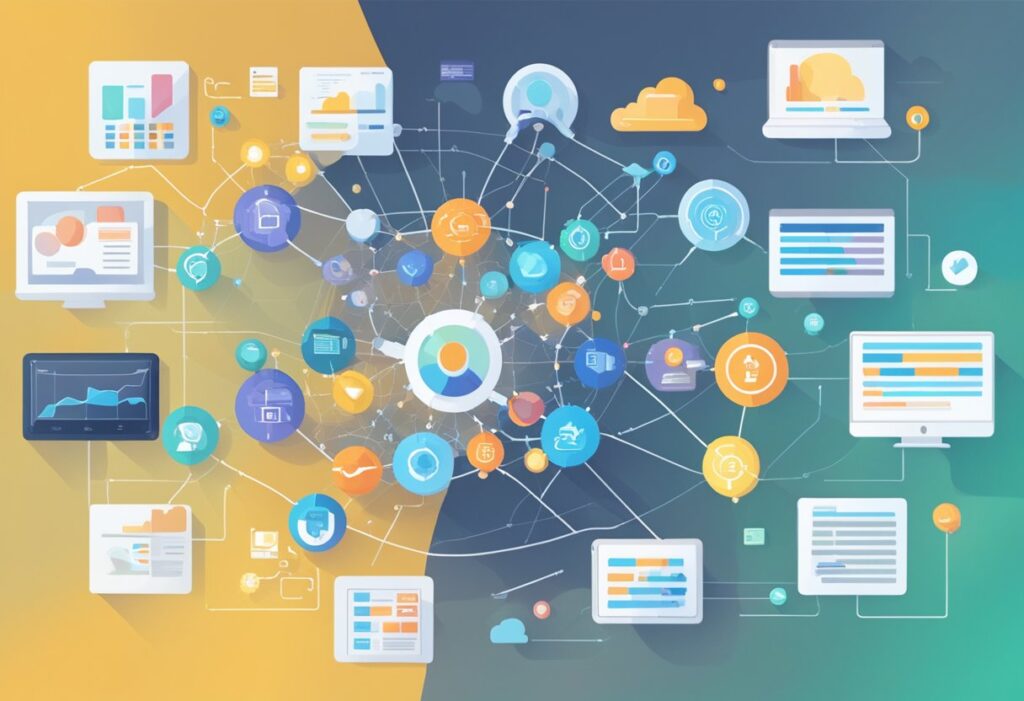
The Promise of Multimodal AI
The landscape of artificial intelligence (AI) is evolving, and one of the most exciting developments is the rise of multimodal AI. Imagine a system that can not only see the world through images, read through text, or listen to sounds but understand all of these inputs together as a cohesive whole. That’s the promise multimodal AI holds. It mimics human-like understanding by fusing different types of data—whether it’s visual, auditory, or textual—and making more insightful decisions.
Multimodal AI has immense potential in transforming industries. Think of self-driving cars that can simultaneously process visual road data, sensor information, and spoken commands. Or in healthcare, where doctors might rely on AI to combine patient data, diagnostic images, and symptoms into a clearer picture of a patient’s health. The key that makes all of this possible is data fusion.
What is Data Fusion?
In the context of multimodal AI, data fusion refers to the process of combining heterogeneous data from various sources into a single, unified system. This allows AI to make more informed decisions by analyzing multiple perspectives at once. Whether it’s text, images, or sensor data, each modality offers unique insights, and when these are fused effectively, the system’s understanding becomes far more nuanced.
It’s like piecing together a puzzle. Text might give you detailed instructions, but an image can provide context that words alone can’t capture. By fusing data, multimodal AI builds a more holistic view of the world, driving more precise outcomes in areas like predictive analysis, real-time decision-making, and even creative generation.
Use Cases Where Data Fusion is Essential
Data fusion is revolutionizing a variety of industries, from transportation to content creation. In self-driving cars, the integration of camera data, radar signals, and LIDAR helps vehicles navigate safely by understanding the environment from multiple angles. In healthcare, AI systems that merge patient records with medical imaging are transforming diagnostics, allowing for quicker and more accurate identification of diseases. Even in content generation, models that blend images and text can create striking visuals with tailored descriptions, bringing new possibilities to creative fields.
The Types of Data Fusion in Multimodal AI
Data fusion comes in different forms depending on how and when the data is integrated within an AI system. The major categories include early fusion, late fusion, and hybrid fusion.
Early Fusion
In early fusion, data from multiple modalities is merged at the input level, allowing the system to process the combined data from the start. For instance, an AI model could take raw pixel data from an image and text data from a description and feed them into a neural network for joint analysis.
While this approach is relatively simple, it often struggles with misaligned data. For example, text and images can operate on different scales, leading to challenges in processing. Nonetheless, early fusion is useful for tasks where the input data is tightly connected, but it may fall short when there is variability in the data types.
Late Fusion
On the flip side, late fusion processes data from each modality separately and merges the results only at the decision-making stage. An example would be a speech recognition system that analyzes audio data through one model and lip movements through another. The separate outputs are then combined to improve accuracy.
This approach excels when different modalities work on different timelines, but the drawback is that it requires more computation. Each modality needs its own dedicated model, making late fusion computationally expensive but often more accurate in complex tasks.
Hybrid Fusion
Hybrid fusion blends the best of both worlds, combining elements of early and late fusion. In this method, parts of the data are integrated early, while others are fine-tuned later in the process. This makes hybrid fusion particularly effective for tasks like emotion recognition, where early integration of visual and auditory data can capture facial expressions and tone, while late-stage processing refines these insights to enhance accuracy.
Challenges in Data Fusion

Despite its promise, multimodal data fusion faces several challenges that make the process far from straightforward. These issues often stem from the complexity of working with multiple, diverse data types that don’t always align perfectly.
Alignment Issues Across Modalities
One of the main hurdles is aligning different types of data. For instance, video frames (which are spatial in nature) and spoken words (which are temporal) don’t always match up. Ensuring that these inputs sync correctly is crucial for models to process them accurately. Cross-attention mechanisms—which dynamically adjust weights based on the importance of each input—are one of the emerging solutions to this problem, helping to synchronize different modalities more effectively.
Noise and Redundancy in Data
When data comes from multiple sources, there’s often a risk of redundant or irrelevant information muddying the system’s understanding. For example, in self-driving cars, both LIDAR and cameras might capture similar environmental data, leading to confusion if not handled properly. Techniques like autoencoders and attention models help in filtering out noise and focusing on the most valuable information, improving the system’s overall accuracy.
Data Modality Imbalance
Another common issue in multimodal AI is that not all data modalities contribute equally. In some cases, one modality may overshadow the others, leading to biased outputs. For instance, a system analyzing both text and video for sentiment analysis might place too much emphasis on textual data, ignoring emotional cues from facial expressions. Modality-specific attention layers offer a way to dynamically weigh each input, ensuring the model prioritizes the right data for the task at hand.
High Computational Costs
Finally, multimodal fusion models require a significant amount of computational resources. The need to process data from multiple streams simultaneously, such as text, audio, and video, puts a strain on GPU power and energy usage. This can make real-time applications, such as autonomous driving, prohibitively expensive. Advances in efficiency-optimized architectures and techniques like pruning and quantization are helping reduce these costs by trimming down the number of parameters and simplifying models without sacrificing performance.
Recent Breakthroughs in Data Fusion Technology
While challenges in data fusion abound, the field has seen remarkable breakthroughs in recent years. These advancements are pushing the boundaries of what multimodal AI can achieve, paving the way for smarter, more efficient systems.
Transformer Architectures for Multimodal Fusion
One of the most significant breakthroughs is the adaptation of Transformer architectures for multimodal fusion. Initially developed for natural language processing (NLP), Transformers have demonstrated exceptional capability in handling multiple data streams through attention mechanisms. Models like VisualBERT and CLIP can now process both text and images simultaneously, improving performance in tasks such as image captioning or text-based image retrieval.
Transformers’ ability to dynamically allocate attention across different data modalities makes them ideal for multimodal fusion. They allow the system to weigh the importance of each input at any given moment, whether it’s an image, a snippet of text, or an audio signal. This flexibility is particularly beneficial for applications like autonomous systems or creative tasks where different data types must be understood in context.
Self-Supervised Learning for Data Fusion
Another exciting development is the rise of self-supervised learning techniques in multimodal AI. Traditionally, AI models required massive amounts of labeled data to learn effectively, but self-supervised models can learn from the structure of data itself, greatly reducing the need for labeled datasets. This method is crucial for training multimodal systems, as acquiring labeled data for all modalities can be costly and time-consuming.
Self-supervised learning has been instrumental in the development of large-scale models like GPT-4 and DALL-E, which can handle diverse inputs with limited human supervision. These models are trained on both labeled and unlabeled data, enabling them to fuse different modalities more effectively, making them ideal for real-world applications where data might not always be fully labeled.
Multimodal Co-Attention Mechanisms
Multimodal co-attention mechanisms have emerged as another groundbreaking technology, enabling systems to focus on multiple data modalities simultaneously. By assigning attention weights dynamically across all inputs, these mechanisms allow the model to decide which data stream to prioritize at a given moment.
This approach is particularly useful in tasks like emotion recognition, where the AI needs to analyze video, text, and audio together to understand human gestures, facial expressions, and spoken words in sync. Co-attention mechanisms enable the system to seamlessly fuse these inputs, offering more accurate insights into complex human behaviors.
Graph Neural Networks (GNNs) for Multimodal Fusion
A relatively new but promising area of research involves the application of Graph Neural Networks (GNNs) in multimodal AI. GNNs are uniquely suited to represent and reason about the relationships between different types of data by modeling them as a graph structure. This makes GNNs ideal for tasks where multiple modalities interact in complex ways, such as in medical diagnostics.
For example, GNNs can integrate medical history (text data), X-rays (image data), and vital signs (sensor data) to form a comprehensive understanding of a patient’s health. By representing these different data types as nodes and their relationships as edges, GNNs can model intricate connections between modalities, improving decision-making and predictions in fields like healthcare and biology.
Future Trends in Multimodal AI Data Fusion
Looking ahead, the future of multimodal AI is teeming with possibilities. As computing power grows and fusion models become more sophisticated, several exciting trends are on the horizon that could reshape industries.
Real-Time Data Fusion
One of the most anticipated developments is the advancement of real-time data fusion. As more powerful computing resources become available, models that can integrate live inputs from various data streams in real time will become more widespread. This capability is crucial for fields like augmented reality (AR) and smart cities, where timely data processing from multiple sensors and cameras can improve everything from user experiences to urban planning.
In smart cities, for example, real-time data fusion could integrate live footage from street cameras, traffic data, and weather reports to optimize traffic flow and enhance public safety. Similarly, AR systems could fuse visual and sensory data in real time to offer interactive, immersive experiences that feel more natural and intuitive.
Cross-Disciplinary Innovations
The intersection of data fusion with other cutting-edge technologies will also drive new innovations. Research into quantum computing and neuromorphic engineering—which aims to mimic the efficiency of the human brain—could address some of the current bottlenecks in scalability and efficiency in multimodal AI.
Quantum computing could provide the computational horsepower necessary to process vast multimodal datasets in seconds, making real-time fusion models even more viable. Meanwhile, neuromorphic chips, designed to process data in a more brain-like manner, could enable energy-efficient AI that can handle multimodal inputs without requiring massive energy resources. These innovations could solve some of the computational and energy challenges that data fusion models currently face, particularly in large-scale, real-time applications.
Applications in Mental Health
Finally, as multimodal AI continues to improve its ability to fuse emotional, textual, and behavioral cues, breakthroughs in mental health diagnostics and interventions are expected. Multimodal systems can analyze speech patterns, facial expressions, and written communication to offer real-time insights into an individual’s emotional state. For example, these systems could detect subtle shifts in voice tone or facial expressions, potentially offering early interventions for conditions like depression or anxiety.
AI could become a powerful tool in mental health care, offering a more personalized approach by understanding patients on multiple levels. This is particularly exciting given the increasing focus on holistic, person-centered care in the medical field.
Navigating the Complexity of Multimodal Data Fusion
As multimodal AI continues to grow, overcoming the challenges of data fusion will be crucial to unlocking its full potential. Whether it’s syncing different types of data, managing computational costs, or addressing modality imbalances, these hurdles need to be addressed to build more intuitive and human-like AI systems.
The key is finding the right balance between different fusion techniques, optimizing efficiency, and ensuring that models are flexible enough to handle diverse data streams in real time. As these technologies advance, the role of data fusion will only become more pivotal across a wide range of industries—from healthcare and education to autonomous systems and mental health care.
The future of multimodal AI is bright, and data fusion is the cornerstone that will make these intelligent, responsive systems possible. The road ahead will undoubtedly present more challenges, but with continued innovation, we’re well on our way to creating machines that think, understand, and respond more like humans than ever before.
References and Resources
- Baltrušaitis, T., Ahuja, C., & Morency, L.-P. (2019). Multimodal Machine Learning: A Survey and Taxonomy. IEEE Transactions on Pattern Analysis and Machine Intelligence, 41(2), 423-443.
This paper provides a comprehensive overview of multimodal machine learning and the challenges of fusing diverse data types. - Kiela, D., & Bottou, L. (2014). Learning Image Embeddings using Convolutional Neural Networks for Improved Multimodal Semantics.
A seminal paper discussing how convolutional neural networks (CNNs) are used to fuse image and text data. - Vaswani, A., Shazeer, N., Parmar, N., Uszkoreit, J., Jones, L., Gomez, A. N., Kaiser, Ł., & Polosukhin, I. (2017). Attention is All You Need. Advances in Neural Information Processing Systems (NeurIPS).
This foundational paper on Transformer models introduced attention mechanisms that have since been adapted for multimodal data fusion. - Radford, A., Kim, J. W., Hallacy, C., Ramesh, A., Goh, G., Agarwal, S., Sastry, G., Askell, A., Mishkin, P., Clark, J., Krueger, G., & Sutskever, I. (2021). Learning Transferable Visual Models From Natural Language Supervision.
Describes the development of CLIP, a model that fuses visual and textual data using self-supervised learning techniques. - Jiang, Z., & Bian, J. (2022). Graph Neural Networks in Healthcare: A Survey.
An in-depth look at how Graph Neural Networks (GNNs) are applied in healthcare for fusing complex data like medical records, images, and sensor data. - Yang, Z., Dai, Z., Yang, Y., Carbonell, J., Salakhutdinov, R., & Le, Q. V. (2019). XLNet: Generalized Autoregressive Pretraining for Language Understanding.
Discusses the use of pretraining techniques in multimodal fusion models, highlighting self-supervised approaches. - Li, Y., Wang, N., Liu, J., & Hou, X. (2020). Multimodal Co-Attention Mechanisms for Emotion Recognition in Video.
A detailed exploration of co-attention mechanisms in fusing audio, visual, and textual cues to improve emotion recognition. - OpenAI Blog. (2021). DALL-E: Creating Images from Text.
A resource explaining how OpenAI’s DALL-E model fuses textual and visual inputs to generate creative content. - Goodfellow, I., Bengio, Y., & Courville, A. (2016). Deep Learning. MIT Press.
A textbook that offers foundational knowledge on machine learning, including sections on multimodal AI and data fusion. - Parmar, N., Vaswani, A., Uszkoreit, J., Kaiser, Ł., Shazeer, N., Ku, A., & Tran, D. (2018). Image Transformer.
This paper extends the Transformer architecture to image data, demonstrating its capability for multimodal tasks.





